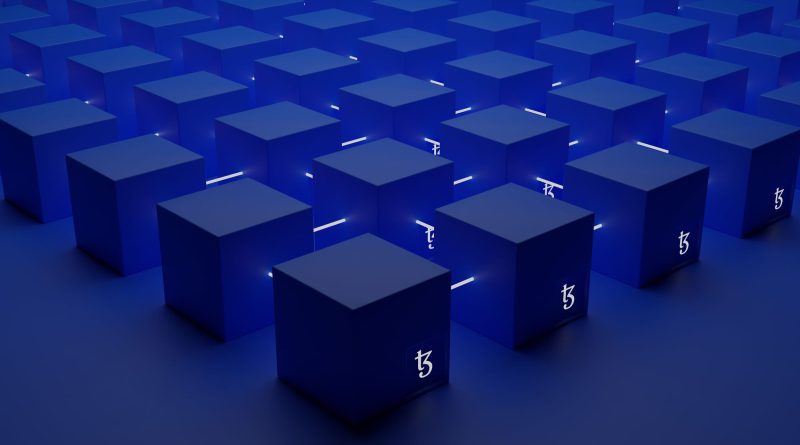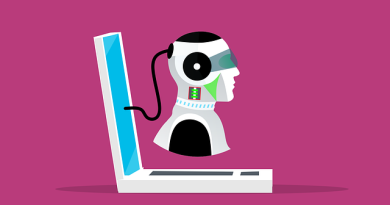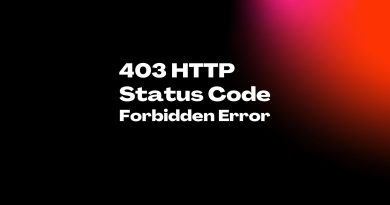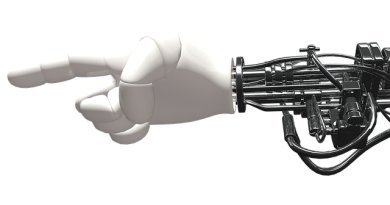Definition of Blockchain Technology
One of the most prominent terms in today’s society is blockchain. Εveryone talks about blockchain, decentralisation, cryptography and cryptocurrencies. Blockchain is one of the most hyped technologies currently. It’s growing fast though and will probably be used in many areas of our lives in the future. But what exactly is blockchain and how does it work? Who invented it and why the last years it has been a trend to technology society as well as to the financial industry? We will try to answer to this questions with simple words on this blockchain explained article.
What is blockchain?
The blockchain is a decentralised transaction technology, were the information stored on an open network, available to everyone and distributed through computers all over the world. It does not use a central administrator and has no central point of failure (this means that it is always available). It operates on a peer-to-peer network and uses cryptography to create a reliable, secure and transparent transaction network. It has the ability to store information securely in an immutable way that enables traceability and transparency throughout all transactions.
History of Blockchain
Blockchain was first introduced by Stuart Haber and W. Scott Stornetta back in 1991 as the Merkle Tree, but this was not widely accepted by many people. Back in 2008, Satoshi Nakamoto used blockchain as the core technology behind bitcoin. The Blockchain was initially used for trading cryptocurrencies online, but nowadays it is also used to trade currencies (e.g. Bitcoin) and other things (e.g. voting). It is now an innovative technology that many companies are trying to adopt into their businesses.
Blockchain structure
The Blockchain is built on five main components:
1. Blockchain transactions
Blockchain transactions are similar to those of a standard financial transaction, but they require no intermediary such as banks. The transactions do not include third parties and the blockchain technology enables users to transfer currency directly between themselves.
2. Blocks
The blockchain data is stored in data structure called “blocks” that form a chain (hence “Blockchain”). A block contains all transactions that represent a unit and they are identified by the hash of their previous version, which is saved within another block’s header.
3. Cryptography
The Blockchain uses cryptographic hash functions to link the newly generated block with its previous version and to determine which one of the two blocks will be accepted.
4. Immutability and transparency
Blockchain transactions are immutable and auditable, which ensures greater transparency of all Blockchain activities.
5. Decentralisation
Blockchain is a decentralized network. Decentralisation is it’s greatest strength and weakness. It’s transactions do not require a central administrator so are not controlled by any 3rd party or central authority such as banks. The decentralised mechanism secures the blockchain network through a consensus between the nodes on such a way that it enables participants to see and verify each transaction without giving trust to third parties.
How does blockchain work?
The blockchain system consists of number of computers called nodes. All transactions are validated by consensus method. If the majority of nodes agrees on something it means that the transaction is valid. The information is stored in the blockchain database/blockchain ledger in a form of blocks that are chronologically linked. Each block contains records of transactions which are permanently recorded. Once the blocks reach the maximum number of transactions then the new blocks are validated and mined to the blockchain.
Blockchain works on the principle of cryptography, where each block contains a cryptographic hash of the previous block, which makes blockchain very secure. So it’s not possible to change information on any earlier blocks without changing subsequent blocks in the blockchain. If a node try to make fraudulent transactions to any of the blocks then the other nodes will rejected it because does not match with their records. It uses hashing algorithms like SHA-256 for providing this feature. Note that some types of blockchains such as the bitcoin blockchain they require computing power to make transactions because they use the proof of stake principle.
Blockchain can be public or private. In public Blockchain networks users are anonymous and anyone who has access to nodes can start mining (validate transactions). Private Blockchain networks require an invitation and must be validated by all members of Blockchain network.
Is blockchain safe?
It is considered to be one of the most secure technologies, which is why is widely used in financial services. It provides a highly secure environment that makes it very suitable for recording events, medical records, transaction histories and identity management.
Blockchain’s strength lies in its decentralisation, where there is no centralized information stored on Blockchain making it virtually impossible to hack. Blockchain also provides the user with full visibility over all activities. It can not be controlled by any single individual or business therefore it’s data belongs to the community. That means that blockchain eliminates the manipulation of any kind of market.
Blockchain is cryptographically secure and provides the ability to create a ‘digital signature’ for transactions. It ensures that your transaction can not be flawed in any way possible. It provides the ability for transactions between users that are irreversible, meaning that once a transaction is completed there is no way to revert it or delete it
Blockchain uses distributed ledger technology (DLT) which means there is no central authority controlling it , but Blockchain’s distributed nodes means that it is stored in many different locations. These nodes are constantly talking to each other which makes blockchain very secure.
How are blockchains used?
Blockchain technology has the potential to impact every industry. It is revolutionizing how transactions are made, removing middlemen and creating a distributed database of records that are secure for both the user and the business using Blockchain’s decentralized approach. Blockchain can be used for various purposes including digital currency, digital assets, decentralised apps, smart contracts etc. Blockchain has the potential to decrease the cost of transactions while increasing productivity and sparking innovation. Blockchain can be used in different industry areas where there is a need for secure data sharing across industries such as Banks, Medical, Insurance, Energy etc. Blockchain can also have an impact on social services, bringing transparency. It can be used for digital identity management where each transaction is encrypted and secure. Blockchain has the ability to transform how companies work with their clients. It can provide a shared platform that both sides can access with full visibility over all transactions made.
Questions
Is Blockchain legal?
Blockchain is legal and it can be used in many different industries as provides a secure platform where data is distributed, not centralized. Blockchain technologies are widely accepted around the globe.
What are the main blockchains?
There are a lot of Blockchain platforms and it is still in its early stages. Here are some Blockchain platforms:
- Bitcoin
- Ethereum (Ethereum blockchain network is the second biggest blockchain after bitcoin in terms of marker cap)
- Cardano
- Ripple
Is blockchain a company?
No, Blockchain is not a company. It is a technology can be used by different companies and businesses to provide services.



